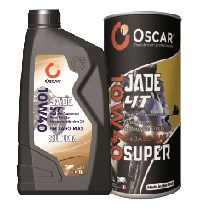
Choosing the right ester lubricants helps ensuring optimal performance and longevity of machinery and equipment. Esters are a type of synthetic lubricant known for their excellent lubricating properties, high thermal stability, and environmental benefits. The following tips will help you select the right ester lubricants for your needs.
Understand your application requirements:
The first step in selecting the right ester lubricant is to thoroughly understand the requirements of your application. Consider factors such as operating temperatures, load conditions, and the type of machinery or engine in use. For example, high-performance racing engines or industrial machinery operating under extreme conditions will have different lubrication needs compared to standard consumer vehicles. Assessing these requirements will help you choose a lubricant with the appropriate viscosity, thermal stability, and performance characteristics.
Check compatibility with existing fluids:
Ensure that the ester lubricant you select is compatible with any existing fluids or materials used in your system. Mixing incompatible lubricants can lead to issues such as reduced performance, increased wear, or damage to components. Refer to the manufacturer’s recommendations or consult with a lubrication specialist to confirm compatibility with existing fluids, seals, and materials.
Evaluate thermal stability and oxidation resistance:
Ester lubricants are prized for their thermal stability and resistance to oxidation. When selecting a lubricant, evaluate its performance under high-temperature conditions. Look for esters that offer excellent thermal stability to prevent breakdown and maintain lubrication effectiveness in extreme temperatures. Oxidation resistance is also important to prevent the formation of harmful deposits and sludge that can impair performance.
Consider the lubricant’s viscosity:
Viscosity is a key factor in selecting the right ester lubricant. It affects the lubricant’s ability to flow and provide adequate film strength under various operating conditions. Ensure that the viscosity of the ester lubricant matches the requirements of your machinery or engine. Consult the equipment’s manual or manufacturer specifications for recommended viscosity grades and choose a lubricant that meets these specifications.
Review performance and additives:
Different ester lubricants come with various performance attributes and additives designed to improve their effectiveness. Look for lubricants that offer superior wear protection, friction reduction, and cleanliness. Additives such as anti-wear agents, detergents, and dispersants can improve the overall performance and longevity of the lubricant. Review product datasheets or consult with experts to understand the benefits and limitations of different ester lubricants.